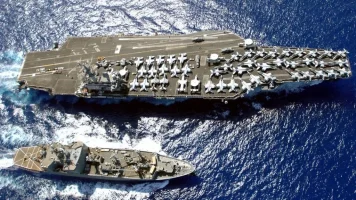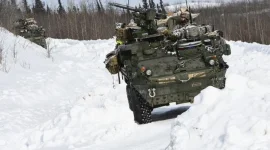- Views: 2K
- Replies: 12
India's naval aviation capabilities could see a significant enhancement with reports suggesting the indigenous Twin Engine Deck-Based Fighter (TEDBF), under development by the Defence Research and Development Organisation (DRDO), might evolve into a fifth-generation stealth aircraft.
Information reported by ANI Media indicates the TEDBF is being considered as the naval equivalent to the Advanced Medium Combat Aircraft (AMCA), the fifth-generation fighter currently being developed for the Indian Air Force (IAF) by the Aeronautical Development Agency (ADA).
While there has been no official announcement confirming this shift, the possibility marks a potential major upgrade for the TEDBF. Originally envisioned as a 4.5-generation fighter, its evolution towards fifth-generation standards, incorporating advanced stealth characteristics, would align it technologically with the IAF's ambitious AMCA program and position it as a future replacement for the Navy's current MiG-29K carrier fleet.
The ADA is progressing with the TEDBF's design, aiming to complete its Critical Design Review (CDR) phase by early 2025, according to program timelines. However, it is not yet confirmed if this initial CDR phase includes modifications for advanced stealth features and an internal weapons bay (IWB).
Defence analysts suggest that integrating fifth-generation capabilities would necessitate substantial redesigns, including changes to air intakes, overall fuselage shape, and the integration of internal weapons carriage. This is considered a challenging but feasible goal, leveraging technologies already being developed for the AMCA project.
Notably, the AMCA program achieved a significant milestone with the completion of its CDR in early 2024 and received approval from the Cabinet Committee on Security (CCS) in March 2024 for prototype development, estimated at around ₹15,000 crore.
The TEDBF project, meanwhile, anticipates seeking CCS funding approval around 2026 to adhere to its proposed schedule, which targets a rollout by 2030, a maiden flight in 2032, and potential induction into the Navy by 2036. DRDO leadership has indicated the TEDBF program remains on schedule.
The Indian Navy's interest in a domestically produced fifth-generation fighter stems from clear strategic needs within the Indian Ocean Region. The development comes as global naval powers deploy advanced carrier-based stealth aircraft, such as China's J-35 and the United States' F-35 variants. Achieving parity requires comparable technology.
The TEDBF is expected to be initially powered by imported GE F414 engines, similar to those selected for early AMCA prototypes, with plans for a future indigenous engine potentially delivering 110kN thrust – possibly benefiting from the technology transfer arrangement secured for the AMCA engine co-development with GE.
Key performance goals for the TEDBF include a combat radius of approximately 1,000 kilometres and a top speed of Mach 1.6. Its design aims for multirole capabilities, encompassing air dominance, ground strikes, and anti-shipping missions.
Incorporating stealth features and an internal weapons bay would significantly enhance its survivability and lethality, allowing covert carriage of advanced munitions like the Astra Mk3 air-to-air missile or various Rudram-series missiles.


